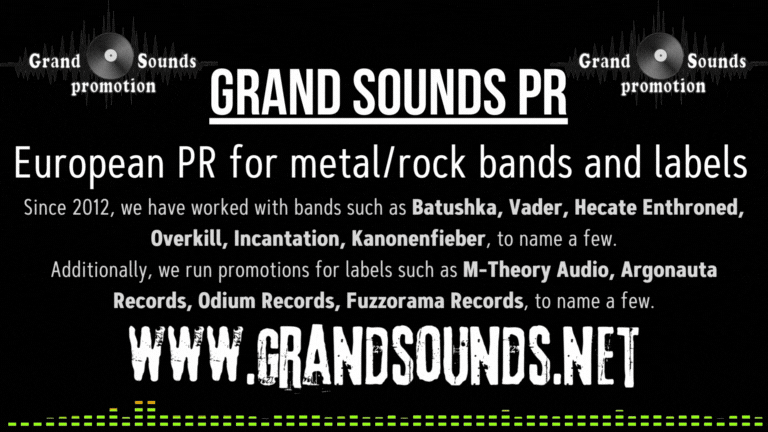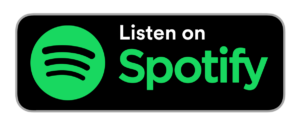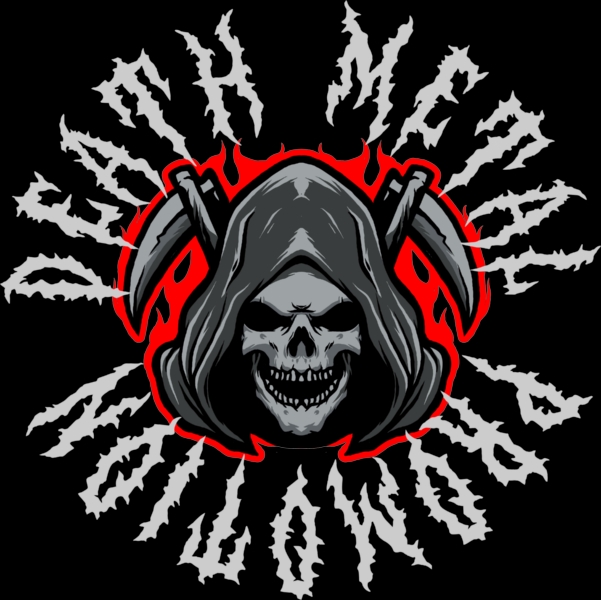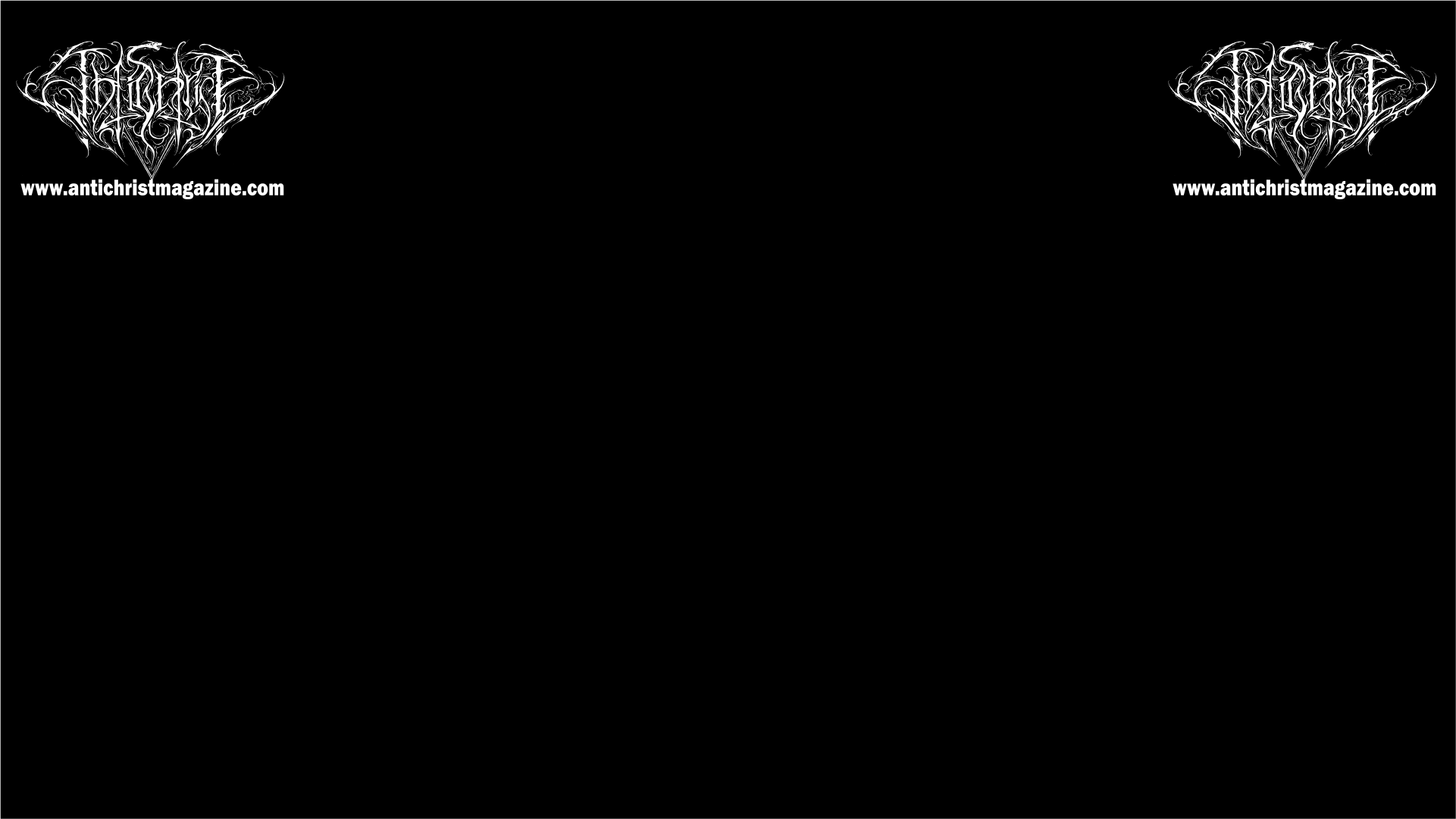Hi! Can you elaborate on the thematic depth of the album and how it represents the band’s journey and endurance over the years?
Hail!
We interpreted all of the things that happened in past like a curse on one hand and as a transformation process on the other. So we called the album ‘Oalevluuk ‘: it is Drentsch (an obscure Dutch dialect that we speak) for ‘old curse’. It stands for throwing off events that were against us and people who were ill-disposed towards us. Shedding old burdens (curse) and blazing your own path. The cover design also represents this: a transformation to a new identity which also counts for us as a band and as individuals. Allowing the most evil and dark part of your personality to triumph through self-reflection. This process of transformation often goes through several stages: sometimes symbolic, sometimes physical. By acquiring knowledge in different ways, by simply reading books or a period of fasting’, staying in nature for a while or having ritualistic sex. Sometimes letting your anger stir up or by consciously undergoing pain. Anything to come out better on the other side.
The writing process for “Oalevluuk” took several years and went through significant changes. How did these changes in the band’s mindset and writing process shape the final outcome of the album?
Most of the material was written between 2007 and 2010. So even we ourselves consider the material to be old. Since then the material hasn’t changed. The songs are the same as they were back then. But we rerecorded a lot of parts several times because producers lost parts of the recordings etc. So we kept working on the album all this time but often reluctantly. So it was a long haul but we kept pushing forward and came out better at the other end. We are a better team now and the atmosphere in the band is great. Hopefully we learnt from this strive so that we will write upcoming material more as a team.
Could you share more about the challenges faced during the recording process, including the setbacks caused by the ominous “Oalevluuk,” and how the band overcame these obstacles to complete the album?
So right after the release of our previous album ‘Piene’ we already had material for an album ready, but that material was more in line with that album, while we actually wanted to take things to a higher level in terms of the atmosphere and intensity of the music and the musicality itself. So we started writing new material all over again. At the same time, technical developments with regard to recording music did not stand still and we began to send ready-made songs to each other via the Internet. This meant that a recording facility had to be set up. Because this was still very primitive compared to the current techniques, writing and recording the new songs took a long time. In the meantime, band members had spread all over the country, so rehearsals only took place a few times a year. Just when we were ready to study the new material, some members decided to stop. Mainly for personal reasons. After that it remained difficult for a while to find suitable musicians. In addition, band members were injured so that they could not be used for a while, recordings were lost and more of that sort of thing. In the meantime, our own recording facility had grown. So we took what was usable from previous recordings (which was only some parts of the drums) and started re-recording everything ourselves in our own time.
The album features lyrics in both English and your local dialect, Drents. How does this multilingual approach contribute to the overall atmosphere and storytelling in your music?
We used the Drentsch dialect on every album. This came forth out of chauvinism. In addition, it conveys emotions much more intensively because it is the language in which you also think and feel. I think we were the first and may still be the only Drentsch speaking metal band. So for us it’s a natural process using our own dialect. In comparison to the Dutch language and English, Drentsch sound much more blunt and direct. We love how straight forward and rude it sounds.
The band faced lineup changes and re-recordings during the creation of “Oalevluuk.” How did these changes influence the dynamics and creative direction of the album?
The songs stayed the same since they were written in 2007 until 2010. However when Swerc (then guitars but switched to bass recently) came to the band he contributed a lot on the rhythm guitars. He changed a lot of the chords. And of course when Lafawijn came he changed the dynamics of the band. The vocal parts (not the lyrics, they were also written in 2007-2010) are completely by his design. And when he joined the whole band started picking up the pace again. But other than that all the musical and lyrical parts have remained unchanged. A lot of the musicians that came and left just rehearsed the already written parts and played those.
The album artwork and mastering were done by renowned artists. How did their contributions enhance the overall vision you had for “Oalevluuk,” both visually and sonically?
Basically we explained to them what we wanted and they executed it according to our plan. We asked Babalon Graphics to create 5 illustrations. We have provided a description of what we wanted and what we would like to see depicted based on our lyrics, our dreams and fantasies. Four out of five of those illustrations can be seen in the inner sleeve/booklet of the album ‘Oalvevluuk’. The fifth illustration was actually intended as the album cover. We asked Médan Savamhel BA’Al to design the book.
We have worked closely with this artist. The blood depicted in the inner sleeve/book is the actual blood of the artist. However, when we got to the point where everything had to be prepared for the printing company, we discovered that the album cover had too low a resolution to be used for the LP version. Because we couldn’t use that illustration, it has never been used so we had to look for new artwork. So we had the opportunity to work with an artist who’s art would fit our work even better. That’s how we ended up at Khaos Diktator Design, because we were very impressed by his previous works. When we contacted him we described what the album stands for.
After our explanation Khaos Diktator Design came up with the concept design. We asked to change and perfect a few things and then it was complete. The same thing goes for the mastering process. We send Necromorbus the mix and explained what we expected of the mastering and Tore delivered what we wanted.
The lyrical themes of the album are described as nightmares, ritualistic experiences, and channeling powers from spiritual dimensions. Can you delve deeper into the inspiration behind these themes and how they were integrated into the album?
Rituals do not always have to be taken literally. It can also represent a learning process or an awakening and realization. But it can also be a literal ritual of worship for spiritual and mind-expanding benefit. The person on the cover also undergoes this transformation ritual, from human into something higher and stronger and leaving his old self behind. So the writing process of a song is different each time. Sometimes it’s just a matter of picking up a guitar and a complete song flows out in half an hour. Sometimes it takes much longer to finish a song. The darkness always helps. We lock ourselves in the studio with materials from which we draw inspiration. Books or materials from nature for example. Sometimes we get intoxicated with something or the other. Sometimes it can also help to fast, which also puts you in a different state of mind.
“Oalevluuk” captures the essence of pure, ritualistic darkness. Can you explain how the band achieved this atmosphere musically, incorporating elements like intense drumming, melodies, and keyboard passages?
That’s really difficult to explain. And it’s kind of private. We already lifted the veil on this in some of the previous questions. What spiritually connects us as a band is a quest related to self-development and growing as an individual. The presence of and communication with forces around and within us, which are greater than observable by human senses, do play a role in this. These forces have been given many names over time, but naming is not really important. In our quests we try to leave the current superficial world as much as possible and focus on a bond with the stronger powers behind it, regardless of adhering to any dogma. A theme that is also reflected in the artwork I was referring to before: taking your own path and transforming into a new identity.
How did having your own recording space influence the creative process, and what advantages did it offer compared to traditional recording studios?
When you have your own recording studio at your disposal it is a blessing and a curse at the same time. You have all the world to perfect the recording but on the other hand there is no pressure. So we took a long time, too long. But it’s good to have a place where we can be inspired and do the things we deem necessary to create the right mood and circumstances in order to write music and lyrics.
Could you shed light on the origin and meaning of “Oalevluuk,” and how it encapsulates the themes of the album?
We already explained this in de previous questions.
How did the external circumstances, such as the pandemic, influence the band’s creative energy and the overall mood of the album?
External circumstances did not have an influence on us or the album at all. We haven’t changed at all. Of course everybody has been through tragedies in life and you learn from all your experiences, but the core remains the same for us. Some people feel the need to adjust their life path after certain events with major twists and turns and to take an occasional different direction. We prefer to keep our path as straight as possible by tweaking a few little things every now and then. We often have the feeling that we are on the inside looking out to the mess others are in. We have stayed the same and our working process has remained the same so far. However the band’s metamorphosis isn’t complete yet. I’ve been the lead songwriter on every album so far. This process is changing. The other members contribute a lot more these days. This is also because the new members are very well versed musically and also have the right “black metal mentality”. From now on I can perhaps outsource more, seek more cooperation and let the course take it’s flow, and incorporate more influences from the other members. So perhaps something will change in that sense.
Can you discuss how the tracklist was curated, and if there’s a specific order to the songs that tells a larger story or conveys a particular emotion?
There is quite frankly nothing mysterious about that. It’s just the process of listening to the songs over and over again and then trying to make sense about what feels right. About what order of the songs works best.
Can you elaborate on the spiritual and philosophical influences that shape your lyrics and music?
There is not one specific writer or philosopher that we are inspired by. We did gain inspiration from various books. The works of Marquis de Sade, Goethe, The divine comedy, Paradise Lost, various occult books and even the Bible. We also draw inspiration from movies (Fellini’s Satyricon and Cassanova and various horror movies) and visual artwork like paintings, engravings and woodcuts from Albrecht Dürer, Gustave Dore, Zdzisław Beksiński, and others. All those things and settings combined lead to a concoction of ideas, concepts, dreams and fantasies and that is what we try to put into our art. So I think one could argue that we are inspired more by art than by philosophers.
How does the ‘satanic brewage of black bile’ description translate into the sonic experience of the album, and what emotions or reactions do you hope to evoke in your listeners?
When we write music or when we record it we try to get into a certain kind of mood. More or less like the Berzerkers had their rituals. We hope the listeners will feel the same emotions as we did.
Looking ahead, how do you envision the future of Salacious Gods after the release of “Oalevluuk”?
We will do some live shows and we are currently working on new material. Maybe we will record an EP or a split first before the next album. But the next album will be called ‘Kwelhekse’.
If you really would like to support Antichrist, you can just Share our article.
You can also support Antichrist by sending a couple bucks to cover some webhosting expenses. =>> PayPal






